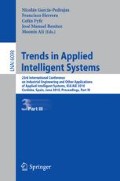Abstract
We show that a Multiple Timescale Recurrent Neural Network (MTRNN) can acquire the capabilities of recognizing and generating sentences by self-organizing a hierarchical linguistic structure. There have been many studies aimed at finding whether a neural system such as the brain can acquire languages without innate linguistic faculties. These studies have found that some kinds of recurrent neural networks could learn grammar. However, these models could not acquire the capability of deterministically generating various sentences, which is an essential part of language functions. In addition, the existing models require a word set in advance to learn the grammar. Learning languages without previous knowledge about words requires the capability of hierarchical composition such as characters to words and words to sentences, which is the essence of the rich expressiveness of languages. In our experiment, we trained our model to learn language using only a sentence set without any previous knowledge about words or grammar. Our experimental results demonstrated that the model could acquire the capabilities of recognizing and deterministically generating grammatical sentences even if they were not learned. The analysis of neural activations in our model revealed that the MTRNN had self-organized the linguistic structure hierarchically by taking advantage of differences in the time scale among its neurons, more concretely, neurons that change the fastest represented “characters,” those that change more slowly represented “words,” and those that change the slowest represented “sentences.”
Access this chapter
Tax calculation will be finalised at checkout
Purchases are for personal use only
Preview
Unable to display preview. Download preview PDF.
References
Chomsky, N.: Barrier. MIT Press, Cambridge (1986)
Pollack, J.B.: The induction of dynamical recognizers. Machine Learning 7(2-3), 227–252 (1991)
Elman, J.L.: Finding structure in time. Cognitive Science 14, 179–211 (1990)
Elman, J.L.: Distributed representations, simple recurrent networks, and grammatical structure. Machine Learning 7(2-3), 195–225 (1991)
Elman, J.L.: Language as a dynamical system. In: Port, R., van Gelder, T. (eds.) Mind as Motion: Explorations in the Dynamics of Cognition, pp. 195–223. MIT Press, Cambridge (1995)
Weckerly, J., Elman, J.L.: A pdp approach to processing center-embedded sentences. In: Fourteenth Annual Conference of the Cognitive Science Society, vol. 14, pp. 414–419. Routledge, New York (1992)
Cleeremans, A., Servan-Schreiber, D., McClelland, J.L.: Finite state automata and simple recurrent networks. Neural Computation 1(3), 372–381 (1989)
Giles, C.L., Miller, C.B., Chen, D., Chen, H.H., Sun, G.Z., Lee, Y.C.: Learning and extracting finite state automata with second-order recurrent neural networks. Neural Computation 4(3), 393–405 (1992)
Sugita, Y., Tani, J.: Learning semantic combinatoriality from the interaction between linguistic and behavioral processes. Adaptive Behavior 13(1), 33–52 (2005)
Ogata, T., Murase, M., Tani, J., Komatani, K., Okuno, H.G.: Two-way translation of compound sentences and arm motions by recurrent neural networks. In: IEEE/RSJ International Conference on Intelligent Robots and Systems (IROS 2007), pp. 1858–1863 (2007)
Tani, J., Ito, M.: Self-organization of behavioral primitives as multiple attractor dynamics: A robot experiment. IEEE Trans. on Systems, Man, and Cybernetics Part A: Systems and Humans 33(4), 481–488 (2003)
Yamashita, Y., Tani, J.: Emergence of functional hierarchy in a multiple timescale neural network model: a humanoid robot experiment. PLoS Comput. Biol. 4 (2008)
Rumelhart, D.E., Hinton, G.E., Williams, R.J.: 8. In: Learning internal representations by error propagation, pp. 318–362. MIT Press, Cambridge (1986)
Author information
Authors and Affiliations
Editor information
Editors and Affiliations
Rights and permissions
Copyright information
© 2010 Springer-Verlag Berlin Heidelberg
About this paper
Cite this paper
Hinoshita, W., Arie, H., Tani, J., Ogata, T., Okuno, H.G. (2010). Recognition and Generation of Sentences through Self-organizing Linguistic Hierarchy Using MTRNN. In: García-Pedrajas, N., Herrera, F., Fyfe, C., Benítez, J.M., Ali, M. (eds) Trends in Applied Intelligent Systems. IEA/AIE 2010. Lecture Notes in Computer Science(), vol 6098. Springer, Berlin, Heidelberg. https://doi.org/10.1007/978-3-642-13033-5_5
Download citation
DOI: https://doi.org/10.1007/978-3-642-13033-5_5
Publisher Name: Springer, Berlin, Heidelberg
Print ISBN: 978-3-642-13032-8
Online ISBN: 978-3-642-13033-5
eBook Packages: Computer ScienceComputer Science (R0)

